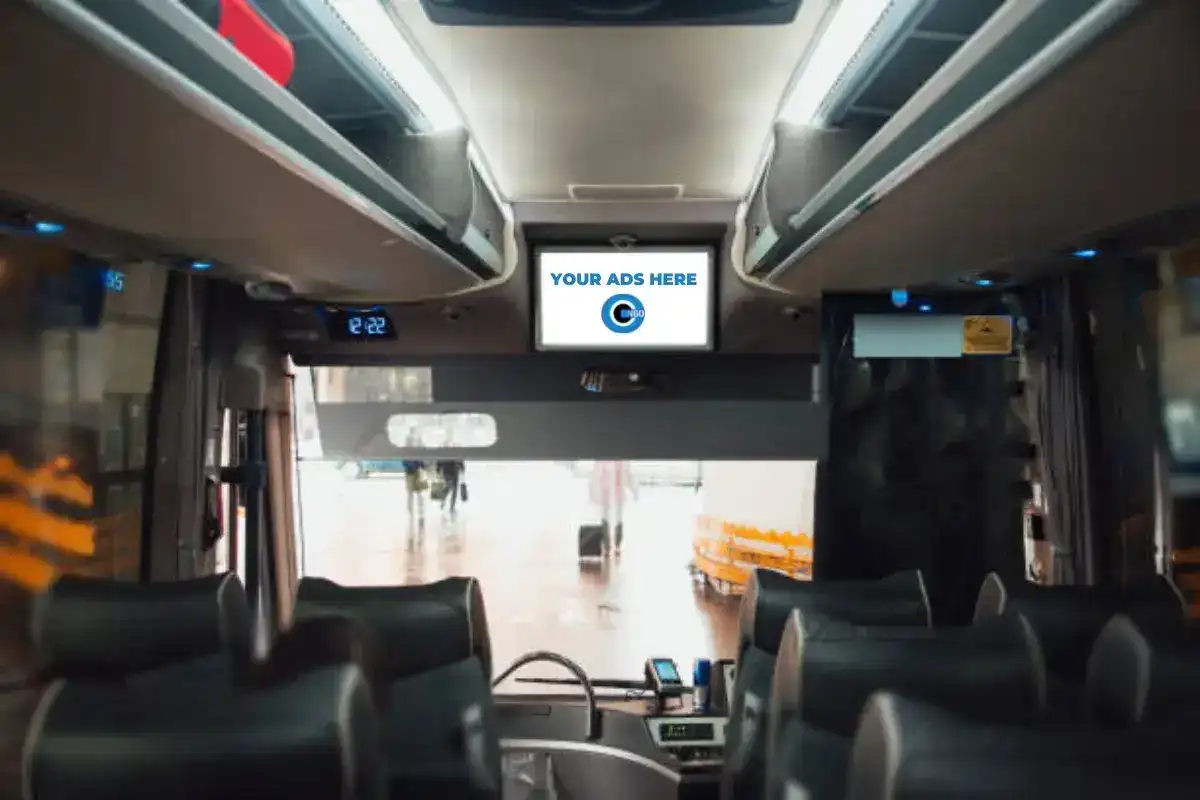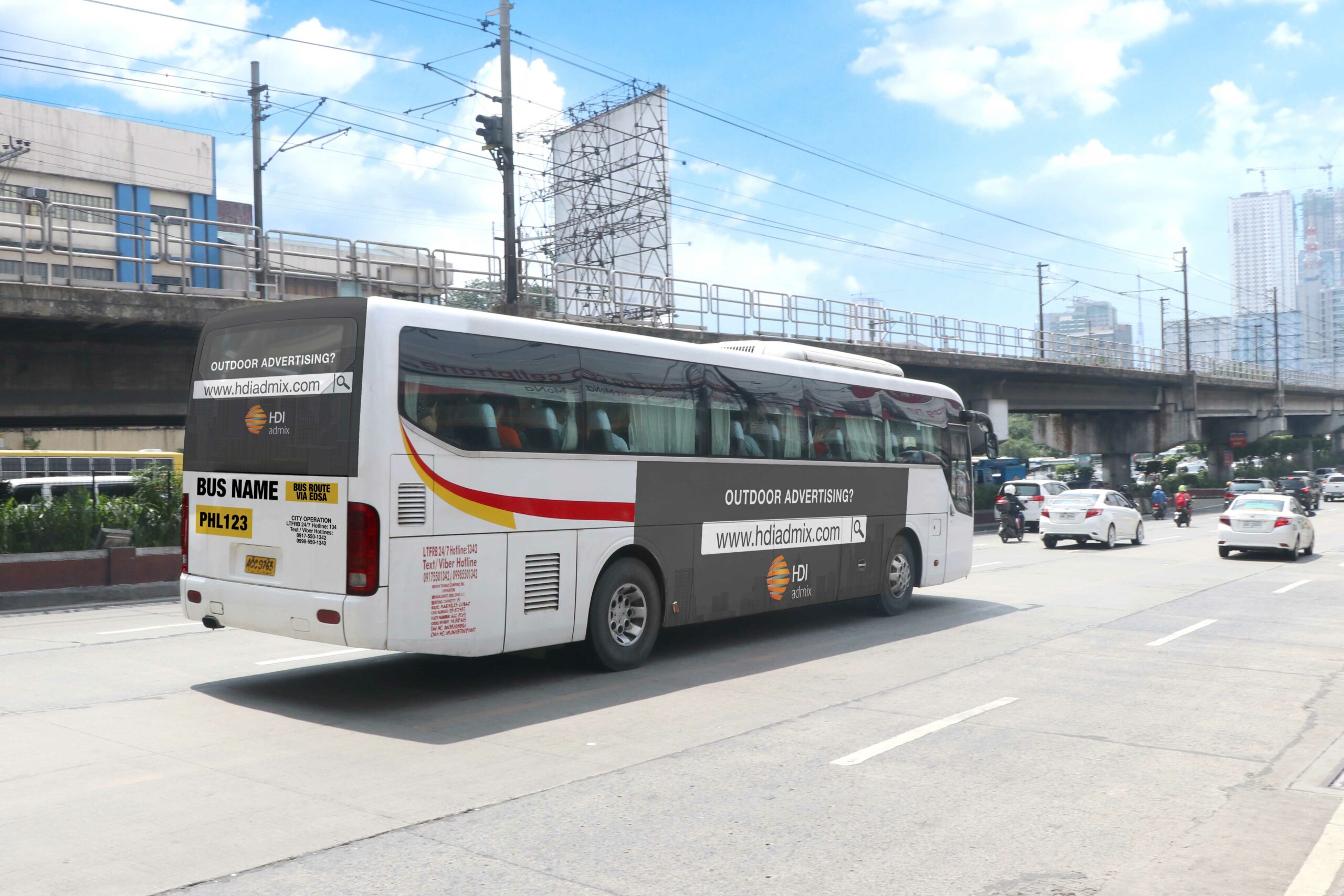Enhance Brand Get To with Transit Advertising Philippines
Enhance Brand Get To with Transit Advertising Philippines
Blog Article
How Transportation Advertising Can Transform Mass Transit Spaces Into Dynamic Advertising Platforms
Transit advertising and marketing holds substantial potential to redefine public transport rooms into lively advertising and marketing platforms that notify and involve. By making use of innovative formats such as interactive stands and digital displays, brand names can not just get to a varied target market but also improve the general traveler experience. This strategy creates a distinct chance for brand names to link with customers in a setup that is frequently neglected. As we check out the diverse advantages and advancing approaches of transportation advertising and marketing, it elevates the inquiry of just how this transformation could redefine our interactions with both brand names and the metropolitan atmosphere.
Advantages of Transit Advertising

Additionally, transportation advertising is extremely cost-efficient compared to typical media. It enables marketers to achieve high perceptions at reduced costs, optimizing return on investment. The restricted audience of travelers provides a chance for brand names to convey their messages to people that are frequently responsive throughout their travel times.
In addition, the dynamic nature of transit marketing permits campaigns to be updated often, making certain that messaging remains pertinent and timely. This flexibility can be important in reacting to market fads or promotional events, keeping the brand top-of-mind for consumers. Lastly, the pervasive visibility of transportation advertising adds to brand recall; duplicated exposure within familiar travel contexts reinforces brand understanding and promotes customer commitment, inevitably enhancing and driving sales brand credibility.
Kinds Of Transit Marketing
Mass transit systems give numerous layouts for advertising and marketing, each catering to various advertising and marketing approaches and target market involvement methods. One prominent kind is external bus and train covers, which cover the whole lorry and create a mobile signboard result, enabling for high visibility in metropolitan environments. These covers can record focus as they go across busy roads, reaching a diverse audience.
An additional preferred style is interior advertising, that includes posters, digital displays, and ads on transit seats. These placements involve passengers throughout their journey, reinforcing brand name messaging in a restricted room. Digital presents, specifically, offer the benefit of dynamic web content, allowing marketers to update messages in real-time.
Terminal marketing is also considerable, including posters, banners, and interactive booths within transit terminals. These advertisements take advantage of foot website traffic and can target particular demographics based upon location.
Last but not least, advertising partnerships with transportation authorities can result in one-of-a-kind campaigns, such as themed transportation experiences or occasions, improving the total engagement with travelers. Each sort of transportation advertising uses distinctive benefits, enabling brand names to tailor their technique to effectively reach their target audience within the general public transportation ecological community.
Engaging Commuters Properly
Commuters are progressively swamped with see it here advertising messages during their everyday journeys, making it essential for brands to engage them in cutting-edge methods. To capture focus in this congested space, marketers need to focus on creative thinking and relevance. Using appealing visuals and succinct messaging can significantly enhance the probability of interaction.
Interactive components, such as QR codes or increased fact attributes, can additionally change fixed advertisements right into immersive experiences, promoting a much deeper connection with the audience. Brand names should focus on resolving commuters' needs and interests, customizing messages to reverberate with their way of life, whether via promotions for local organizations or services created to enhance their commuting experience.
In addition, timing plays a critical duty; strategically positioning advertisements during top commuting hours can make best use of exposure and influence. Involving commuters properly likewise involves leveraging social media sites assimilation, enabling travelers to share their promotions or experiences straight from transportation systems, thus enhancing brand name reach.
Essentially, effective involvement hinges on recognizing the traveler trip and creating engaging, interactive, and appropriate advertising experiences that not only record interest but additionally drive activity and loyalty. By doing so, brands can transform public transport into a vibrant advertising and marketing platform that resonates with its audience.

Measuring Advertising And Marketing Impact
How can brand names accurately examine the effectiveness of their ad campaign in transit atmospheres? Gauging the effect of transit advertising and marketing needs a diverse approach that integrates quantitative and qualitative metrics. One prevalent technique is tracking engagement through mobile analytics, where brand names can analyze foot website traffic patterns and app interactions before, throughout, and after campaigns.
Surveys can supply beneficial insights into brand name recall and customer sentiment, allowing brand names to evaluate how well their messages resonate with commuters. Additionally, monitoring social media sites involvement relevant to certain projects can expose shifts in public understanding and brand name discussion.

Moreover, collaborating with transit companies can boost dimension precision, as they usually possess in-depth market information on ridership trends. By incorporating these methodologies, brands can develop an extensive understanding of their marketing efficiency, guaranteeing her explanation that their campaigns not only reach however also influence their target audiences successfully.
Future Fads en route Marketing
A substantial shift is prepared for in transit advertising as technological advancements and transforming customer habits reshape the landscape. Transit Advertising Philippines. The integration of interactive media and digital display screens is expected to boost involvement, permitting brands to supply vibrant material that reverberates with diverse audiences. As mass transit systems accept clever technology, advertisers will take advantage of real-time data analytics to tailor messages based on guest demographics and behaviors
Moreover, enhanced truth (AR) is positioned to reinvent the means commuters communicate with advertisements. By giving immersive experiences, AR can change an ordinary journey into an appealing story that catches focus and fosters brand name commitment. This advancement will likely encourage marketers to create more experiential projects that drive customer interaction.
Sustainability is one more important trend influencing transportation marketing. As environmental consciousness expands, brand names will progressively seek to line up with environmentally friendly techniques, making use of sustainable products and advertising eco-friendly campaigns within their projects.
Verdict
Finally, transit advertising and marketing supplies considerable advantages by boosting brand name presence and involving a restricted target market. Via different layouts, such as outside covers and digital displays, it transforms public transport right into a dynamic advertising and marketing platform. Reliable engagement strategies and durable measurement methods further amplify its impact. As patterns progress, the potential for ingenious communications in between travelers and brands is poised to grow, making certain that transportation advertising and marketing stays an essential element of modern-day advertising strategies.
Transportation advertising and marketing holds considerable capacity to redefine public transportation spaces right into lively marketing platforms that involve and educate. The prevalent presence of transit advertising adds to brand recall; repeated exposure within familiar travel contexts reinforces brand recognition and cultivates consumer loyalty, eventually enhancing and driving sales brand track record.
How can brand names precisely analyze the effectiveness of their advertising and marketing projects in transportation environments?In conclusion, transportation advertising uses substantial advantages by enhancing brand name visibility and engaging a restricted audience. Transit Advertising Philippines. As patterns advance, the capacity for cutting-edge interactions in between brands and visit the site commuters is poised to expand, guaranteeing that transportation advertising stays an essential part of modern advertising approaches
Report this page